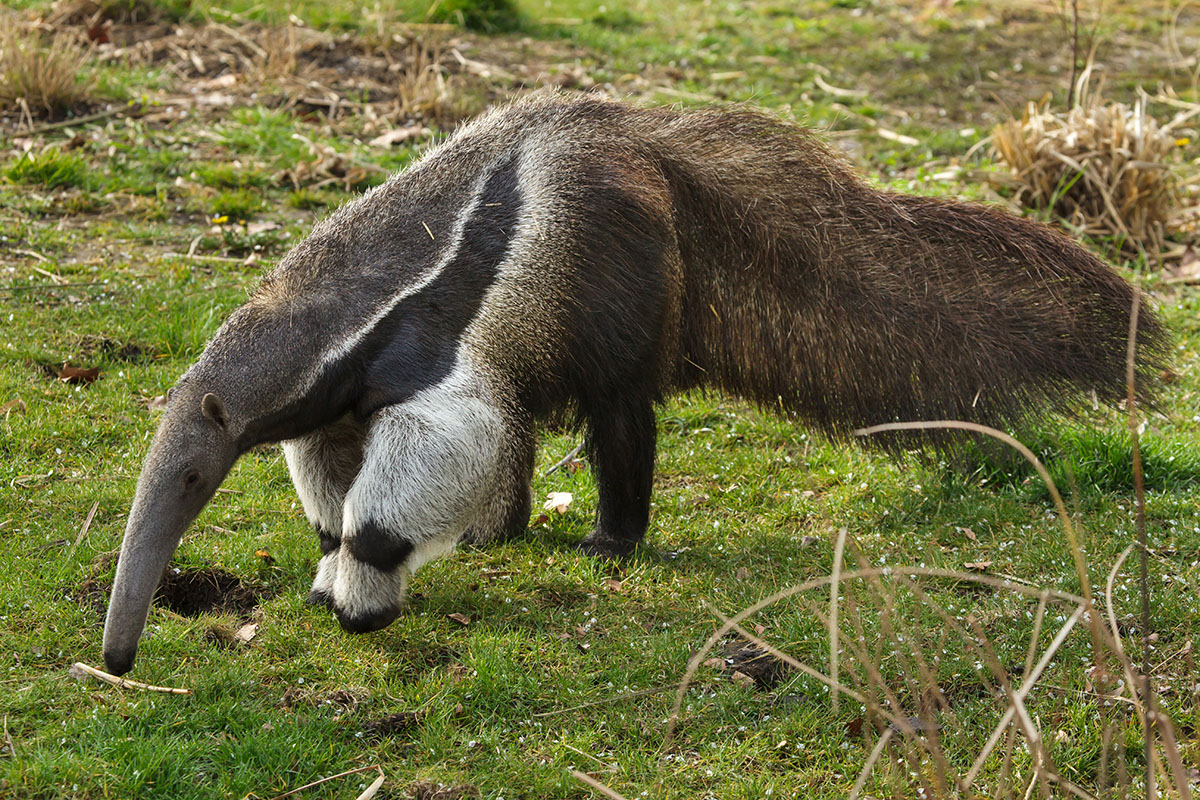Description: The Giant anteater has a narrow head, long nose, small eyes and round ears. It is covered with stiff gray or brown straw-like hair, which grows up to 16 inches (41 cm) on the tail. It has a white-banded black stripe running along the body to mid-torso. Its front feet have extremely strong large claws that are used to tear open mounds for food and for defense. When walking, the claws are curled under to protect them, thus the anteater walks on its knuckles. They are also excellent swimmers.
Size: Giant anteaters are the largest of the South American anteaters with a head/body length of 3.3 – 3.9 feet (1-1.2 m) and a tail length of 2.1-3 feet (0.6-0.9 m). They can weigh up to 90 pounds (41 kg), with the male being larger than the female.
Behavior: The Giant anteater does not have teeth, however, it has a long thin tongue that can reach two feet (0.61 m). It uses its tongue to get inside ant hills and termite mounds to feed. When threatened, it will stand on its hind legs and strike rapidly with its claws or to hug like a bear.
Diet: In the wild, it eats insects such as ants, termites, beetles and insect larvae. It will flick its tongue, about 150 times per minute, to collect its food. The tongue is coated with sticky saliva during feeding to aid in getting the insects to the muscular stomach that grinds up the insects. This anteater can eat 35,000 insects in a day! In captivity, food is a challenge, since termites and ants are often not an option. Keepers occasionally treat them to pieces of wood or tree roots that contain insects.
Senses: The Giant anteater has poor eyesight and hearing, but an excellent sense of smell.
Communication: There is a lot of communication, especially between young and their mothers. Snorts, sniffs, hisses and roaring can be heard when fighting.
Reproduction: In captivity, breeding occurs year-long. Gestation period is about 190 days resulting in a single offspring. The female gives birth standing up and then the offspring crawls onto her back where it remains until it is almost half her size, about six to nine months. When born, the offspring has a full coat of hair and adult markings. The young will nurse for two to six months and become independent after about two years.
Habitat/range: Found in Central and South America, where they prefer tropical forests, savannas and grasslands.
Status: IUCN Red List Vulnerable; CITES Appendix II. Included in AZA Species Survival Plan®(SSP). This program cooperatively manages specific, and typically threatened or endangered populations.



